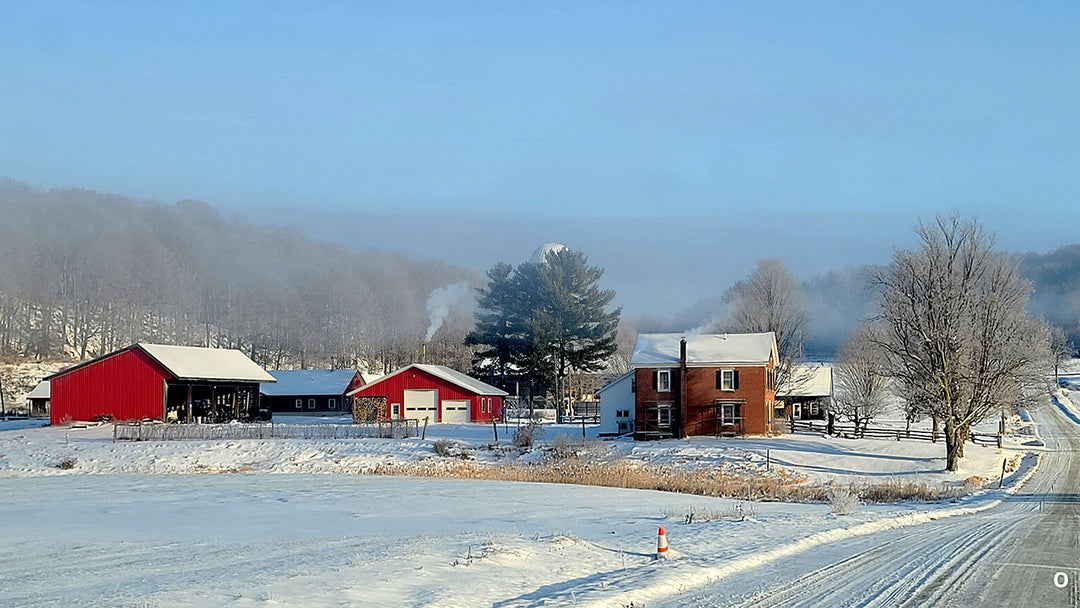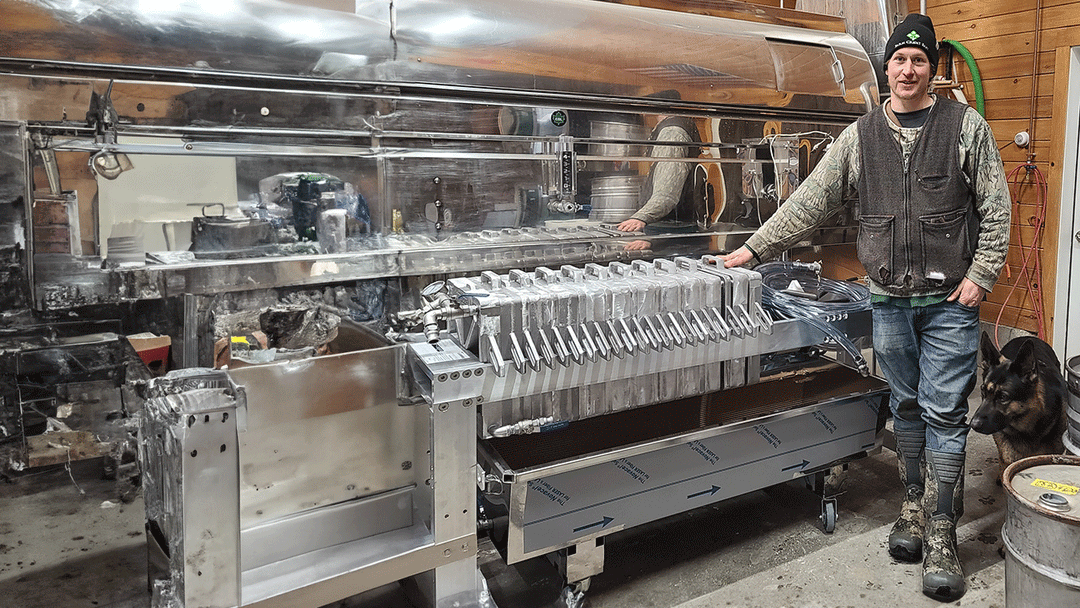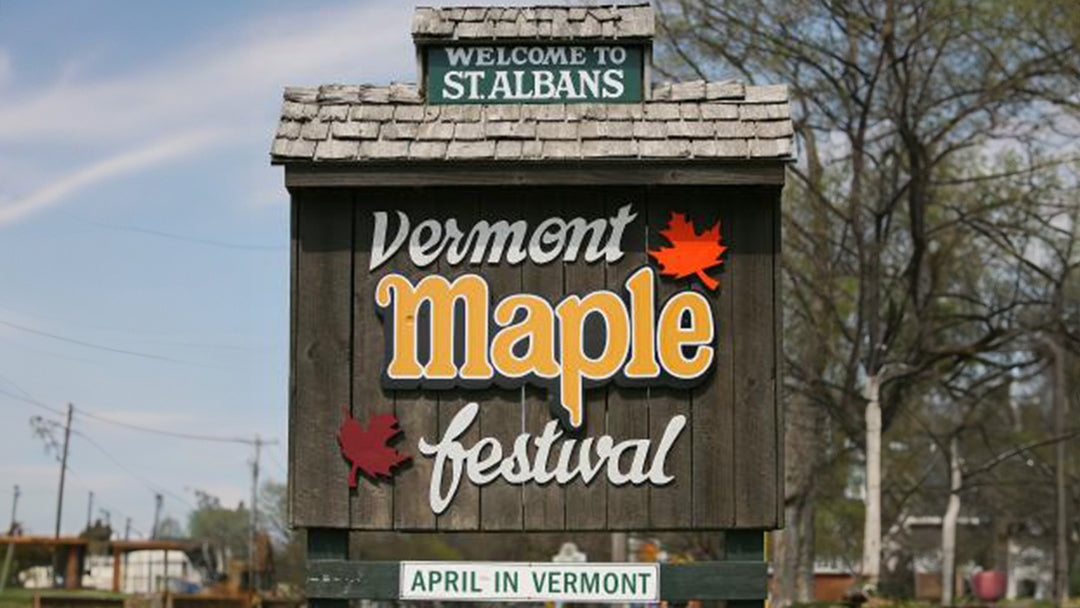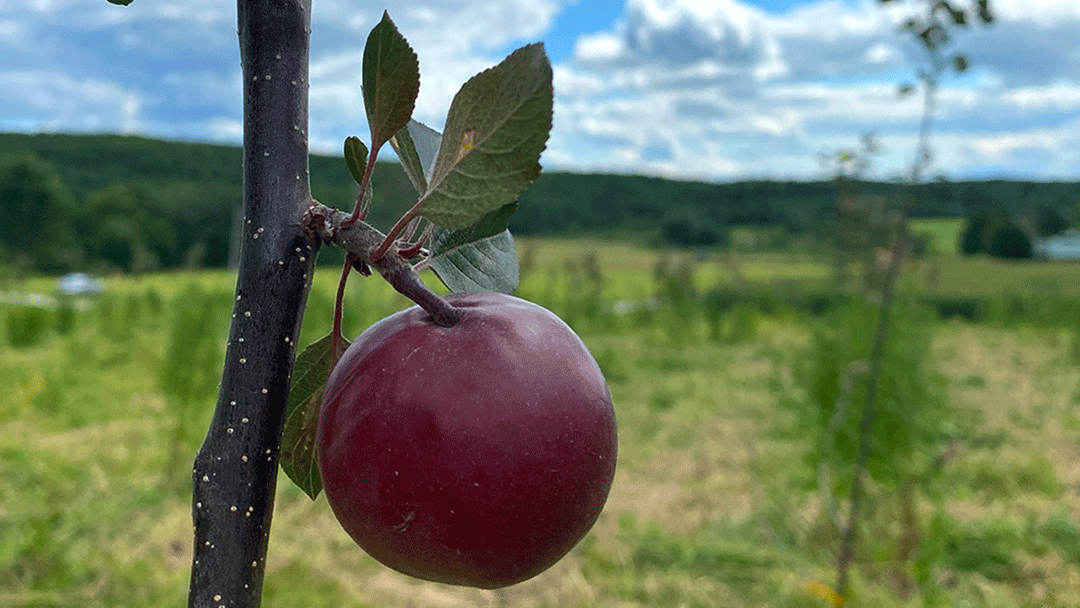New Addition to the Farm - Cider Apple Orchard

We've had an incredibly busy but rewarding summer at Carman Brook Farm. We are thrilled to share that we've been diligently working on establishing a new apple orchard with the exciting goal of producing our very own craft cider! (better known in the United States as hard cider). We've been prepping for almost 3 years now from ordering the trees, prepping the site locations, and then it finally becoming real with the herculean effort required to plant and then keep our new trees alive!
There are now two new apple orchards on the farm. We refer to them as the North Orchard and the South Orchard. Each location holds approximately 1,500 trees for a grand total of 2949 new cider apple trees.
Cider Apples Differ from Eating Apples
Our orchard is planted with specific varieties important to producing high-quality ciders. The varieties are picked for differing acid content and high levels of tannins to lend a mouth feel and body to what we expect to be excellent cider. I often describe the difference in cider apples from eating apples to friends by saying when you bite into them you have that mouth-clearing or gum-tingling feeling that makes them less enjoyable to eat. An easy comparison would be the difference between wine and eating grapes, which differ in much the same way as cider and eating apples.
Land Prep
The land prep began about 3 years ago when we began removing cow fencing that in some places running through the forest edge was stuff my dad said was old when he was a boy. Both orchard locations were previous cow pastures for generations rather than cultivated fields. We coupled this task with removing bushes, brush, and in a few cases pretty old maple and pine trees that were growing proudly in the middle of the pasture. We have the cuts and bruises to show for our efforts, but that was completed about 2 years ago.
Following this, we observed the locations for drainage issues, and in early fall of 2022, we did an initial install of drainage tiling, dug out tree root systems, and planted brassica, a bitter, tall growing plant from the cabbage and mustard family that reduces the nematode populations in the soil. Nematodes are microscopic organisms that live in tree root systems and are not normally a problem. However, when you plant a small apple root where large tree roots lived, the population is out of balance and can stunt the growth of new plantings.

Finally, come spring of 2023 we were on the advent of finally planting the trees we ordered so long ago. During the spring thaw, we were concerned about how wet the soil was in a few locations. This prompted us to do an 11th-hour addition to the drainage system to the Southern Orchard, which ended up being an addition of 2200' of tiling and the building of an access road. As soon as this was completed my childhood friend James, from Depatie Family Maple showed up and turned over the brassica and smoothed the fields in preparation for planting. The stress levels were extremely high during the sequencing and timing, but it ended up working out perfectly in the end.
Planting our Trees
Going into planting, we knew that we were going to be in for a sprint rather than a marathon, as the trees were going to show up with bare roots, packed in wood chips. This means the trees would need to go right into the ground as soon as possible. In preparation for this, we wanted to have our rows laid out and individual tree locations marked out so we could go right to work.
Contour Layout for Planting Apple Trees
Our Southern Orchard as you can see in the photo below, is a bunch of compound slopes, so we decided on a contour planting that would look stunning from the roadside. The problem with this is that you have to lay out your tree rows while maintaining your row and tree spacing. To do this, and I'm not sure if this is the best way, we used a 150' rope with markings every 12' for tree location and laid out a guide row on the top left corner. Then we used a 15' rope that we had to move from tree location to tree location to maintain our correct row spacing.

South Orchard in late July, notice the ground cover crop has established.
I didn't track our work hours, but I estimate that the Southern Orchard layout took 2/3 of the total layout time. Whereas in the Northern Orchard, we were able to use a grid layout with straight lines. We now know why no one messes around with contour planting, though it's going to look good in years to come.

North Orchard just after planting in mid-May, notice the fresh holes and bare earth.
Tree Delivery and Digging Holes
The day our trees showed up we weren't sure what to expect, we knew they'd be in a refrigerated tractor-trailer truck, but what do almost 3000 two or three-year-old trees look like? Well, they looked like a bunch of bare sticks packed into crates wrapped in plastic, and there were a lot of them.

From this point for the next 5 days, it was dawn til dusk, drilling holes with rented equipment, fixing broken equipment, finding more equipment, ensuring varieties go in their designated spots, and then us and a few friends we hired planting with rakes and hoes. This continued at a breakneck pace until we were finally done. Looking back, we were lucky to get dry, cool weather for the duration, and no sooner did we plant the last tree then it rained a bit. Though the rain didn't stop all summer in Vermont, we could have done with a little less than we got.

Levon taking a turn on the ride behind Skid-Steer drilling holes as other members of the team planted in the background.

Jon posing after filling in the final tree!
Once we finally planted the last precious tree, we immediately seeded down the orchard understory, which was a mix of a slow-growing Timothy grass and clover which we included for its natural nitrogen-fixing ability. My dad was right at home planting this as his 50 years of farming experience made this the most straightforward task.

Deer Exclusion Fence
In hindsight, we would have built the fence prior to planting, and I'd recommend to everyone establishing an orchard in an area with a heavy deer presence to do so. Our thinking was that with everything growing around the orchard we would be able to build the fence at our leisure throughout the year before they became browsed too heavily in the fall and winter. This was NOT the case, from day one the deer took a liking to the trees and ate every leaf from chest high down, while also breaking the tops of a few to get to the leaves up high.

This led to another herculean job to get the fence up as soon as possible. Now we've built plenty of fences in our lives for cow exclusion, but this fence was a whole new ball game. At 8' high it needed to be higher than a cow fence, but it was also vast at over 7000 linear feet. The design has 5-inch pressure-treated poles every 90 feet with metal T-posts every 15 feet.
To get the large pressure-treated posts in the ground we rented a post-driving tool that mounted to our tractor dropping a 400-pound weight on the top of the 12-foot post and driving it four feet into the ground. Next, we built supporting corners and gates and followed up with the metal T-posts. We also decided quickly that we wanted a gas-powered post driver for the metal posts which eased some of the manual labor of installation, though lugging the 45 lb. driving 10 feet into the air was a wearying task.

The last part was almost as difficult, we had to watch a few YouTube videos on how fishermen tie their nets together and thereafter we were armed with the skills to tie our individual 250-foot sections of fence netting together where we then dragged it around the perimeter, stretched to fit, and fastened to the poles.
The fence-building project was without a doubt the most labor-intensive part, but as soon as the deer were excluded the trees began to thrive.
Second Guessing Ourselves?
When we ordered the trees 3 years ago, we had to lock in our varieties as they have to be custom grafted from the nursery, in this case, we used Wafler Nursery out of the Finger Lakes region of New York. They were excellent to work with and found all of the varieties we requested. However, in that time we began experimenting with the 120 or so wild varieties that grew from seed in the pasture and forest edge of our dairy farm. Additionally, we were concerned with the suitability of the common cider-specific varieties from England and France that traditionally are used to make cider.
Our climate is different enough from where these apples are grown across the ocean that we have to combat serious health issues like Fireblight, a disease that if not tightly controlled kills the tree. In contrast, apples that grow from seed in our region and survive to maturity have natural resistance to this deadly disease and thrive in our climate. It's also interesting to note these "wild" trees are completely unknown and unnamed because apple trees when grown from seed are completely unique from the mother tree (just like people!).
With all this in mind, we made experimental cider from the fruit of the 120 or so wild trees I mentioned above. We like about ten of them and are going to trial them in our orchard by grafting some of our more disease susceptible varieties over to the yet-unnamed varieties from the farm. This coming spring of 2024 we plan on grafting (or changing the variety) of about 500-1000 of our trees to include other regional experimental apples.
To do this project we set aside some funds and plan to enlist the help of an individual with vast knowledge and experience in grafting, wild apple exploration, and just an all-around capital fellow named Matt Kaminsky, or his pen name Gnarly Pippins. Check out his apple content here where you can also buy some trees or grafting wood for yourself.
I highly recommend his annual Pomological Series where you can stay up to date on the latest discoveries of "native" apple fruit found by enthusiasts across the United States. The artistic photos, detailed descriptions, and notes are valuable for anyone interested in American wild apples. You'll even find a Carman Brook Farm apple in the soon-to-be-released 3rd volume.
With a lot of thought and contemplation, we think we can better represent our terroir, reduce pest management spraying, and make a unique cider by pivoting to fruit more suitable to our climate. We'll be excited to share more as this project develops.
We planted these things, now what?!
As we have immersed ourselves in this new venture, we've been attentively tending to our apple trees, researching, and preparing for the production of a cider that we aim to be a representation of our farm's unique terroir. We are looking forward to sharing more updates, and eventually, the delicious fruits of our labor in the near future.
In the midst of our apple orchard endeavors, we haven’t forgotten our roots. We are pleased to remind you that this year we have produced some of our best-tasting maple syrup in recent years! Our shelves are stocked, and we have plenty available for order. Whether you're looking for something sweet to accompany your autumn breakfasts or a unique gift we've got you covered.
Thank you for your continued support. We are excited about the diversification of our farm and can’t wait for you to experience both our high-quality maple syrup and our new cider, when it becomes available. Please stay tuned for more updates, and don’t hesitate to reach out if you’d like to place an order or have any questions.
Photo Dump











Nathaniel: We very much enjoy reading your posts about your family’s Heritage Farm. You are a marvelous raconteur and clearly love what your family has been doing. . . The best of luck with the cider and we look forward to ordering some when you have it available!
Sounds exciting! Pat and I would love to come visit.
Karen and family- So excited for you and can’t wait to try the final products (are they ever really final?). Maybe a nice Maple Apple Cider -yum!!! Congratulations and best wishes for a very successful venture!!
So you invested in bitter-sharp apples, did you? What varieties did you buy, including graft scions? I don’t care for craft cider myself, but I’m fond of apples, esp. the heritage/heirloom/antique varieties, and of apple history—and your maple syrup.
Loved the fence saga! If you haven’t read Frank Brownings’ Apples, do so. Some of the most poetic prose I’ve ever read. I read ages ago that John Chapman’s apple seeds didn’t grow eating apples, but bitter-sharps for cider: as you said, apples don’t grow true to the seed used.
Wild apple trees make for a lifetime of discovery, and I’d love to get a list of the names you give them. UC Davis and UC Riverside, in California, may wish for germplasm, if that’s the right word. I know that there are other pomological collections in the lower 48.
I enjoy your articles. You write well about your farm, and I enjoy learning how your family runs it.
I think you made a really good move. Craft cider has surged in popularity and you should do well with it.
Another thought, if you haven’t already considered it, would be to explore the idea of making your own craft apple cider vinegar. It’s easy to do, and could be another nice profit center for you.
Leave a comment